| Umělec magazine 2002/1 >> Meste, Manet, Marcos & Co. (Philippe Meste) Supplement to a Program of Global Mutation in the State of Prevailing Misery That Constitutes Our Time. | List of all editions. | ||||||||||||
|
|||||||||||||
Meste, Manet, Marcos & Co. (Philippe Meste) Supplement to a Program of Global Mutation in the State of Prevailing Misery That Constitutes Our Time.Umělec magazine 2002/101.01.2002 Frank Perrin | paris | en cs |
|||||||||||||
|
"1997: In the hypermarket equipped with artistic attitudes and services of all kind, in the department of marked-down performances, promotional hangings and departmental directors focused on their coming programs, what sort of event are we still capable of? What are we the bearers of? The cashier watches contempt and dismay. They call themselves artists. They will enter a new millennium and do not recognize themselves in their surroundings. They find themselves at the exit; exactly at the turn of a new state of commodification, at the frontier of a new center of exchange — without mediation, active, in direct access, without commission.
Anatomy of a Situation (Diagnosis) For, in fact, what roles do the current actors of art play? In a world imperceptibly buried in conformity, administration, domesticity, and blind Disneylandism, what valence of proposition and difference remains for them? A temperature reading is necessary. Thus meddling with the mercury: widespread anaesthetic, so many current practices are stuck in laborious concerns that end up above the fireplace (the bourgeois version I)… Bourgeois, zombie: the neverending return, like a bad series endlessly programmed on the airwaves of our conduct. Exhaustion. Sclerosis gains another step; comforted by a small tribe of artists whose practice can be summed up as so many subprefectures’ cocktail parties. Supported by the growing desert of cultural institutions whose only ambition is to assure their morose and endless continuation. Is it possible, today (the first of May 1997: two o’clock according to my watch) that the past lingers so long? That the 19th century outlasts its own time? It is possible, at this point, that art has been dispossessed of its liberating potential? That it has laid down its arms? That it has lost its arms? That it has lost its life? In writing this, I no longer know if it is possible to make sense of what I’m talking about, so profound is the prevailing neurosis: Intoxicating, loss of project, loss of impetus: perte blanches. For It’s Enough! In one word: Stop! Basta! The goose has been cooked for the agents of the contemporary (and even decidedly overdone in this exsanguious world) — agents whose practice can be summed up as canceling and slowing down every movement. For what we are capable of doesn’t resemble what we are shown, nor what we are told. For in 1997, the field of art is occupied by technocrats rotten to the bone. For a vast suppository surrounds us. For it’s possible that you have it in the ass: you’re sitting on your seats. For we’ll ask nobody for our oxygen. For in 1997, punks, we’ll never celebrate our 20th birthday. For the directors of art centers grow beards and wear tweeds. For there’s trouble in the air; and it’s enough. For everywhere smells of cologne, in the subway and the white cube. For one must reeducate oneself to vomit. For they want to steal our most precious possession — the unsubsidizable. For these remarks are those of love and unsubmissiveness. For there is still a slap in the face to be given and that such an attitude (among others) remains the heritage of artists: a luxurious species focused on jests of retort with the primary objective of removing us from the torpor, to see what happens. The Mestian Act: Slaps in the face, of vomit, of sandwiches (Aesthetic Element) It’s not certain that, in the last instance, one ever chooses to be an artist, but that one is pushed, like others, into the center of the Maquis. It is a fact that Meste bathes, even wallows in this confrontation with a minimum of concession. He throws something back (at us), doesn’t digest the status quo, can’t refrain from vomiting this sad state sandwich (socio-economico-politico-libidinal) from there where we stand. Openly acivic, he maintains this jest which is at the same time displaced and frontal, and thus embodies this impersonal and global slap in the face. Like Burden was for the American society of the Vietnam war (with less heroism in the performance), Meste is the resistance in French society to Chiraco-Baladurism, antiterrorist plans and securitan ideologies in general; in other words, to this movement that dispossesses us of the real under the auspices of protecting us. In this way, Meste becomes our rebel unconscious that vomits that which limits us and, as such, grows at our feet. The ground is unambiguous and slippery: like the commodity of our dogs on the pavement. “Julio Cortazar said that Marcel Duchamp said that elephants are contagious, and Julio said that he, himself, added that revolutions are themselves also contagious!” It’s Gonna Blow: Moving Why get so worked up! Is it necessary or even reasonable? I already hear the following; the art milieu is so fragile one must watch over it so as not to weaken it further. Let’s settle ourselves into this cultural comfortability, sharing, together, this warmed-up pizza. Ugh! With Meste, a question remains, embarrassing to the point that we don’t dare ask it; what is it, in the end, that an artist risks playing today? Today, precisely, when there’s nothing left to lose. If the art milieu is so fragile, it’s proof that it’s in the process of falling apart. Certainly, the odds and ends of art will take a blow. The ground will change. Meste with his toolbox intervenes here, in this change of landmarks. The center and agglomerations of art of all kinds enter a terminal phase when it becomes no more than a matter of finding the principles of art’s activity. Explosions in the artist reservoir. Our thesaurizations become outmoded; our investments superseded. No Jam: The Stooges, France, The Big Fuck In the era of the spineless, Meste is the ransom of our little bourgeois fantasies that continue the art system in France. Since after World War II, nobody has dared such directness. A point of extremity in a period without glory. He is the terminator of the Paris-New York axis, the dull variations of the quinquagenarian couple Cesar-Oscar, the Grand-Daddy Hollywood (so long devoid of any significance), this in the hour in which we celebrate French art with lifeless exhibitions in order to grapple on to something solid. Meste undertakes the magisterial fuck. Meste born in Fuck-France, city of mental suburbia, land of cyber desertions. Meste, like I AM, articulates the big fuck of the era 1939-1997, from the first housing estates to the fires of Safrane, from Petain to Chirac, our history’s big No. This explosion, (this fart others might say), is vital for us because it finally exposes us. This directness remains so disconcerting because it contains no personal artistic message. Not unlike what the Stooges staged in 1969 (through their idiotic sound), the neurosis of a stupefied American society, what Meste reveals is France in 1997 and its respective neurosis. Today, exhibitions of French art continue: their indigestibility is inevitable. From Work to Weapon (The Military Post) Making a work means taking money, tools, in short weapons. The Mestian method, this global act, the GASM (Gun, Action, Sex and Money) disarms the authorization to take (“Theft”) and sets it to work (“Military Post”). But it is, each time, a personal exploitation and audacity: that the limits that art comprehends of itself, or that a society comprehends of violence, must be identified (“Theft,” “Military Post”). Meste’s weapons are merely mirrors: it is a question, in their reflections, of identifying our artistic limits, as political… irrefutably. Cyber in Bare Hands: Sperm and Advertising (Watercolors) With direct action, Meste’s hacking departs from the numerical and passes into activity. In the era of cable communication, Meste refuses the traps and decoders, becoming the direct antidote for all the institutional-coded practices in circulation. In the era of the net, he generates viruses without computers, with bare hands, without the detour of software. For it’s the same struggle, whether it be Photoshop or Disneyland. The same screen: a management of death. In short, Meste has grasped the question of our time: a struggle to the death against globalized devitalization, a reappropriation of control, a resurgence into circulation. “The Watercolors” revive the grand art of bare hands, turning down icons of fashion splattered with the artist’s sperm: already, Manzoni, “The Artist’s Shit,” here, Meste, Nothing other than sperm — and, at the same time, our limits. The Box Hole (Modern Sex II) Again The limits, not only of the visible but the admissible. The SM2 (Sex Moderne 2) is not the body without organs; it is the organ without the body either the extremities (the hands, the feet, the head) or again, the erogenous zones (the genitals, the breasts, the mouth, the face). The SM2 brackets everything of the body that is neither sexual nor a physical extremity, leaving only the erogenous and the corporeal limits. The SM2 displays, in its most rudimentary economy and constraint, a body detached from its articulations, reified, mummified in an obscene repose. Or, eve, an Origine du monde after Courbet, frontal and strictly physical, immutable and charnel, devoid of a pictorial alibi: a face to face encounter stripped of flatness, a frontality in the flesh, an origin frozen before us. White, smooth, soft and hard, the body becomes a shell, the cube glued to the body. In 1971, for his first performance (and diploma), Burden shut himself in an art school locker for five days, thus reassessing the limits of the minimal cube. What it demands of us is, in a certain sense, that we bury ourselves in our limits in the white cube. What is absurd is not so much this demand, but, that until Meste, it has never been formulated in such plastic terms. What the cube calls into question is our body, our limits, our acts and what we are capable of: this is its only prerequisite. From Manet to Marcos & Meste: Direct Mutations Certainly, Philippe Meste’s contribution resides above all in the conquest of the reality principle and frontality which begins pictorially with the scandal of Manet (a painting that, for the first time, does only one thing: looks us in the face) and follows politically with the case of the Deputy-Commander Marcos (a discursive directness without deviation or ideological basis, as Manet had abolished the narrative alibi). The turning points begin in the face to face encounter; and this conquest of frontality certainly marks out one of the most important stakes today: to establish a direct relation with the real, without mediation, without a screen. It is at the forefront of this direct access that the coming mutations are committed; for, above all, they reveal the struggle for a shared recovery of the real and for the breaking down of screens of all kinds. Thus, Meste’s message addresses us, not merely on a personal level (that of a work to be appreciated without equivalence), but as an invitation to everyone for an art and a world without a mediator. Once more — of the real — only autodetermination is real; and of all that is outside of this; there is merely screen, decoration, diversion and dispossession. In his pacific revolt, Meste is perhaps alarming, which for this very reason remains reassuring. Before us and with us, we have an artist who has finally, irreversibly, without any possible remission and for each one of us, finally abolished our most profound syndrome: security. P.S. We should never excuse ourselves from insurrection, for we have no other choice. "
01.01.2002
Recommended articles
|
|||||||||||||
|
04.02.2020 10:17
Letošní 50. ročník Art Basel přilákal celkem 93 000 návštěvníků a sběratelů z 80 zemí světa. 290 prémiových galerií představilo umělecká díla od počátku 20. století až po současnost. Hlavní sektor přehlídky, tradičně v prvním patře výstavního prostoru, představil 232 předních galerií z celého světa nabízející umění nejvyšší kvality. Veletrh ukázal vzestupný trend prodeje prostřednictvím galerií jak soukromým sbírkám, tak i institucím. Kromě hlavního veletrhu stály za návštěvu i ty přidružené: Volta, Liste a Photo Basel, k tomu doprovodné programy a výstavy v místních institucích, které kvalitou daleko přesahují hranice města tj. Kunsthalle Basel, Kunstmuseum, Tinguely muzeum nebo Fondation Beyeler.
|







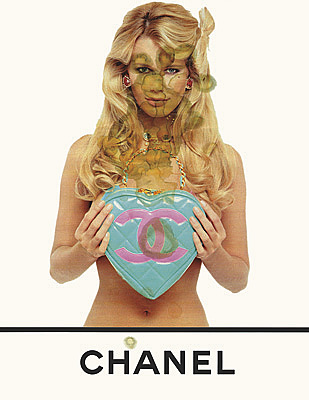


















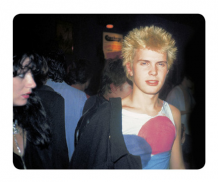




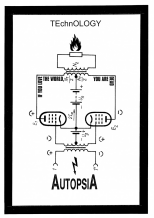
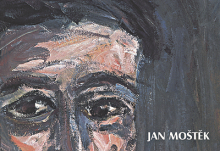
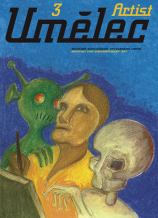
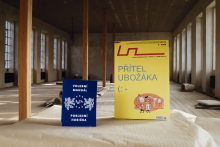


 New book by I.M.Jirous in English at our online bookshop.
New book by I.M.Jirous in English at our online bookshop.
Comments
There are currently no comments.Add new comment